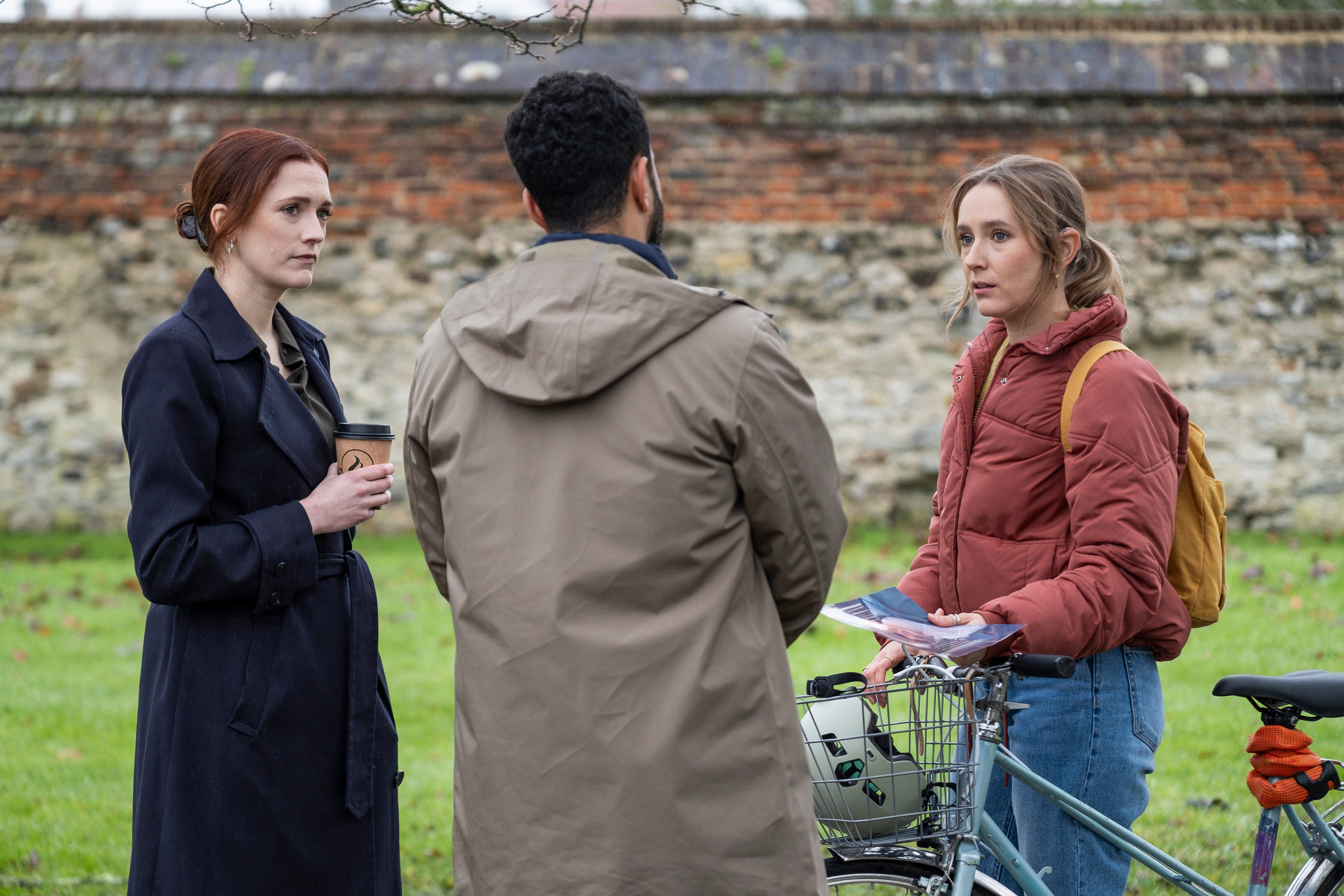ARTICLE AD BOX
Deaf actor Rose Ayling-Ellis has already smashed her share of glass ceilings, moving from a high-profile role on EastEnders to a victory on Strictly Come Dancing and then on to a wily appearance on Doctor Who. In her first leading television role, however, she’s surpassed herself. In ITV’s Code of Silence, a sexy, funny and edgy six-part crime thriller, Ayling-Ellis delivers a performance fit to rank alongside the best work of Saoirse Ronan, re-writing the rules, along the way, for how a heroine should look and talk. Code of Silence seems likely to boost her reputation in the States (it will be available on streaming service BritBox). I have two predictions. Ayling-Ellis will, one day, win an Oscar. And, when accepting the award, she’ll use BSL to crack a wicked in-joke.
Plot-wise, Code of Silence has a familiar ring. Ayling-Ellis is Alison Brooks, a deaf woman working in a police canteen, who, thanks to her brilliant lip-reading skills, becomes part of an investigation into a jewellery heist, ultimately earning the respect of DI James Marsh and DS Ashleigh Francis (Andrew Buchan and Charlotte Ritchie). In the recent, cringeworthy Channel 4 series, Patience, an autistic woman who’s brilliant at solving puzzles becomes part of a police investigation, ultimately earning the respect of the cops. It’s the latest British underdog trope: the special-needs protagonist, with a special set of skills. Be patient, though. Alison is “different” in a way that’s genuinely different.
Alison lives in a council house in Canterbury, with her single mum (Fifi Garfield; fantastic), who, like Alison, is deaf, uses BSL as well as hearing aids, and keeps being fired from jobs. That the family are working class is a front-and-centre issue. Alison has recently split from her deaf, middle-class boyfriend, whose parents’ money and privilege, we learn, have given him a status Alison can only dream of. Alison develops a connection with Mancunian gang member, Liam (Kieron Moore; blazing with chippy charm), who grew up “pinging” between foster homes and has spent his entire life “not being looked at”. Poverty, in Code of Silence, is shown to be disabling. The point that keeps being underlined: to be disabled and poor is to be doubly sidelined.
Gender roles, too, are explored, with the hair and costumes all part of the jolting package. Ayling-Ellis is happy to cut a pathetic figure (in the aforementioned Doctor Who episode, her character, Aliss, was so bedraggled she made Tiny Tim look like Thor). The actor is sticking with that non-glam aesthetic, often appearing here with no make-up and wearing a stripey tank-top that even The Killing’s no-frills Sarah Lund might deem too basic. Yet, Alison’s gaze – her sexual curiosity, her literal willingness to stare and act on her feelings – dominates so many scenes, and her chemistry with Liam is off-the-charts (the air between these two fizzes and pops). It’s a useful reminder that a disabled female lead can be lustful, and lustworthy, without being treated like a stereotypical object of desire.
On top of all that, writer Catherine Moulton, who is partially deaf, finds room to correct myths about lip-reading (in a nutshell: it’s not all about the mouth). Moulton’s method to show what’s happening when Alison goes into detective mode is ingenious. As Alison gathers gobs of information from the faces and entire bodies of her targets, subtitles pop up, in which the letters of the alphabet stretch and blur. It takes several seconds before the sentences settle into a crisp and intelligible shape. Used so inventively, the subtitles (as in Annie Hall and Trainspotting) encourage us to think about how even the simplest of verbal interactions are multi-layered. They’re also fun. With each episode, you get quicker at re-sorting the letters.
Is every second of this series satisfying? Nope. Ritchie – who, in my opinion, is a total superstar – isn’t given enough to do. She basically spends six episodes handing out sound advice that everyone ignores. Visually, it feels like they blew the budget on hiring a Porsche; each establishing shot of picture-postcard Canterbury is shonkier than the last. Meanwhile, plot-holes abound, such as, what happened to all the experienced, law-abiding lip readers who normally work for the police? Are they on some kind of lip-readers’ retreat? As for the later episodes, they’re increasingly pulpy, convoluted and lacking in suspense (we’re provided with intel, in episode five, that makes it easy to guess a big reveal). Most aggravatingly of all, less and less room is given to Alison’s interior life.
Still, overall, Code of Silence is truly groundbreaking, and the first three instalments are sublime.

A few years ago, plans to make a film about deaf-blind icon Helen Keller were put on hold when activists took objection to deaf actor Millicent Simmonds being cast as Keller (it was felt the part should have gone to a deaf-blind actor). Members of the disabled community are no longer grateful to be noticed. They’re not willing to tolerate half measures. Ayling-Ellis (an executive producer on Code of Silence) is part of this movement. Alison says of the jewellery thieves: “They underestimate me. A lot of people do.” Surely now, there’s no one left who still underestimates Rose Ayling-Ellis.









 English (US) ·
English (US) ·